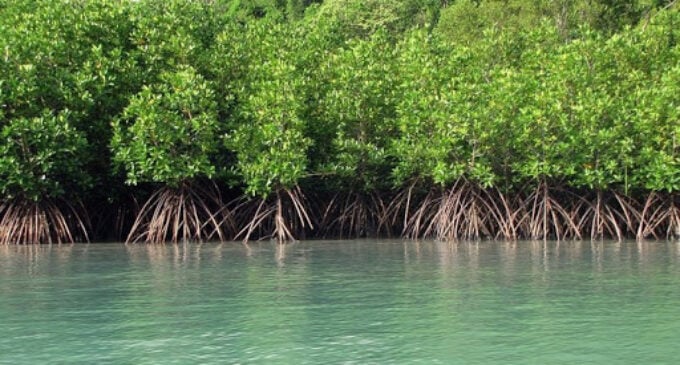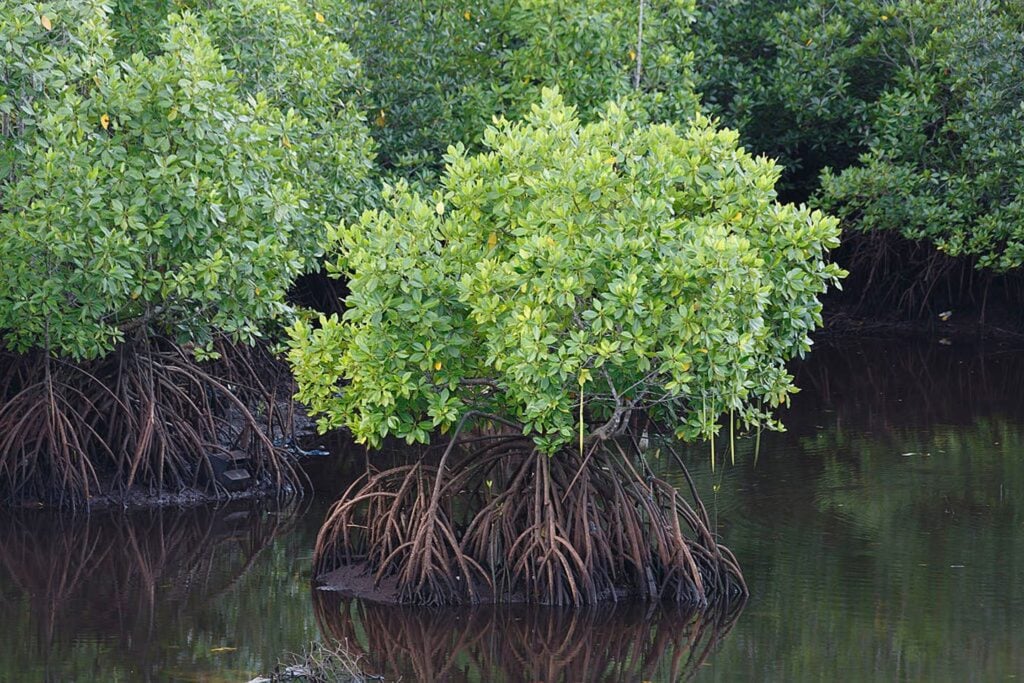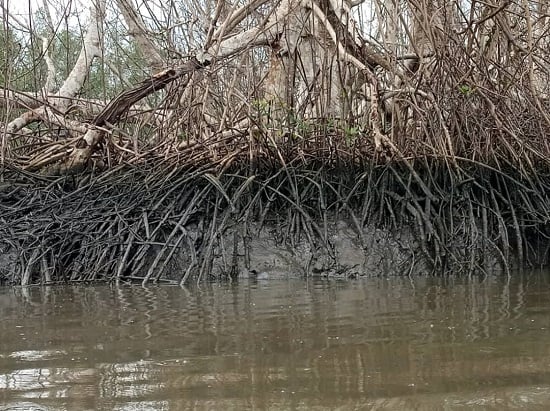ANALYSIS: Usefulness of mangroves in fight against climate change

Climate change is the long-term shift in temperature and weather patterns caused by natural processes and human activities such as deforestation and the burning of fossil fuels.
One of the most significant drivers of climate change is carbon emissions – the burning of fossil fuels like coal, oil, and gas releases carbon dioxide into the atmosphere. This traps heat from the sun, causing the earth’s temperature to rise; this is known as the greenhouse effect. The more carbon dioxide is released, the more the earth’s temperature rises, leading to more severe climate change.
The impacts of climate change can be devastating and one of the most visible effects is the increase in extreme weather events like droughts, heatwaves, and floods. These events can have serious consequences for communities around the world, causing damage to homes and infrastructure, disrupting food supplies, and increasing the risk of disease outbreaks.
Mangroves are one of the natural resources that can help mitigate the impacts of climate change. They absorb carbon dioxide from the atmosphere and store it in their roots and soil. Mangroves are some of the most efficient carbon sinks on the planet, storing up to four times more carbon per hectare than tropical rainforests. They are also able to protect coastlines from erosion and storm surges, which can be intensified by climate change. According to the UN Environment Programme (UNEP), emissions resulting from mangrove losses make up nearly one-fifth of global emissions from deforestation.
WHAT ARE MANGROVES?

Mangroves on water surface
Mangroves are a group of trees and shrubs that grow in tropical and subtropical coastal areas. They have unique adaptations to survive in saltwater, such as specialised roots that can filter out salt and leaves that excrete salt.
Mangroves are found in over 100 countries and have a unique ecosystem that supports a variety of wildlife and marine life, including birds, fish, and crustaceans. They also provide a habitat for endangered species such as sea turtles, manatees, and crocodiles. Although mangroves make up less than one percent of all tropical forests worldwide, they are highly valuable ecosystems, providing an array of essential goods and services which contribute significantly to the livelihoods, well-being and security of coastal communities.
The global average carbon stock of mangroves is around 1,000 tonnes of carbon per hectare, including soil carbon. If released back into the atmosphere, the resulting emissions would be the equivalent of travelling 26 million kilometres by car – 650 times worldwide.
The mangrove forests in Nigeria are some of the largest and most diverse in the world. They are mainly found in the Niger Delta region – making up the largest in Africa and the third largest in the world, stretching along the coast and covering about nine states.
The forests are known for their high biodiversity and they have significant economic importance for local communities. They are a source of food, medicine, and building materials. For example, the bark of the mangrove tree is used to make rope, while the wood is used to build houses and boats. The mangroves also support important fisheries, such as shrimp, crab, and oyster, which provide income and food for local communities.
IMPORTANCE OF MANGROVES IN MITIGATING CLIMATE CRISIS

Mangrove trees in Nembe community, Bayelsa, Niger Delta area of Nigeria, drying up due to oil spills
Preserving mangroves has many advantages such as mitigating the impact of climate change, offering critical ecosystem protection, and providing socio-economic benefits.
- Coastal defence: Mangrove forests act as natural buffers against storm surges, tsunamis, and erosion, reducing the impacts of extreme weather events intensified by climate change. Mangroves offer low-cost risk reduction in the face of rising sea levels and changes in storm frequency and intensity. They help reduce the risk from tropical cyclones – that cause loss of life and damage to properties and infrastructures – by decreasing the action of waves and impacts of flooding. Research by UNEP has demonstrated that mangroves’ robust build efficiently reduces storms’ destructive capabilities and wind surges by 70 to 90 percent.
- Carbon sequestration: Mangroves are highly efficient carbon sinks, capable of sequestering large amounts of carbon dioxide from the atmosphere and storing it in their biomass and sediments. The bulk of mangrove carbon is held in the soil, ranging from about 83 to almost 99 percent of the carbon stored in mangroves. They are able to sequester carbon at a rate that is up to five times higher than other tropical forests, due to their unique adaptations to grow in saline environments. The roots of mangroves are able to trap and store large amounts of organic matter, which can help to build up soil carbon over time. If undisturbed, the carbon can remain stable for centuries or more. In addition, the dense canopy of mangroves can help to reduce the amount of sunlight that reaches the forest floor, which can slow the rate of decomposition and increase the amount of carbon stored in the soil.
- Water filtration: Mangrove roots and soil help to protect the health of surrounding ecosystems by acting as a water filter while also improving water quality. This filtration is enabled by the mangrove’s capability to absorb and store heavy metals, sediments and minerals that would otherwise result in the pollution of nearshore water bodies. Mangrove trees have a high tolerance for a wide range of salinities and contamination levels and perform an effective service in biofiltration and waste processing. They also play a vital role in nutrient uptake, fixation, trapping and turnover, and cycling of nutrients, even in the face of degrading conditions.
- Biodiversity support: Mangroves form a nutrient-rich breeding ground for numerous species that thrive above and below the waterline. They harbour diverse flora and fauna, including rare and endangered species. Mangroves provide habitats for a wide range of plants and animals, contributing to overall ecosystem health and resilience. Mangrove forests are also a potential source of undiscovered biological materials that could benefit humankind, such as antibacterial compounds and pest-resistant genes.
- Livelihood support: Local communities rely on mangroves for fishing, timber, non-timber forest products, and ecotourism, contributing to their economic well-being. Mangroves also offer medicinal herbs, as well as recreational and spiritual benefits to some local residents.
Despite their importance, mangroves are threatened by deforestation and degradation. They are often cleared for aquaculture, agriculture, and urban development. Pollution from oil spills, sewage, and agricultural runoff can harm mangroves and the wildlife that depend on them. Finally, climate change is harmful to mangroves. Rising sea levels, more frequent and severe storms, and changes in temperature and rainfall patterns can destroy mangrove forests.
To safeguard these vital ecosystems, there is a need for a multifaceted approach that involves both local and global efforts. This can be achieved by raising awareness, implementing sustainable management practices, restoring degraded areas, enacting policies and regulations, as well as fostering international cooperation.











There are no comments at the moment, do you want to add one?
Write a comment